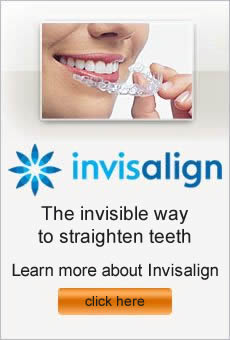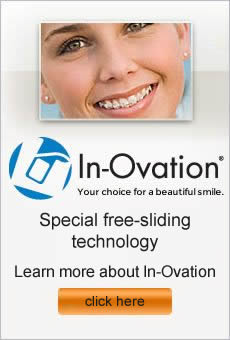If visits from the tooth fairy are coming to an end and your child’s permanent teeth are filling in, it is probably time to start considering a trip to the orthodontist. When a child’s permanent teeth begin erupting, a qualified orthodontist will be able to assess and detect possible problems with emerging teeth and jaw development and begin the process of planning treatment to correct these issues.
The American Dental Association and the American Association of Orthodontists suggest children visit an orthodontist for evaluation by the age of seven, which is roughly the age most kids see the eruption of permanent teeth. Because an orthodontist is specially trained to align and straighten teeth, early detection of issues allows them to develop the best possible treatment plan.
Early assessment does not mean your child will begin the process of orthodontia immediately. However, this screening will allow your orthodontist to consider the best future treatment for bite problems, overcrowded or misaligned teeth. Some of these problems can be corrected at an early age through other dental treatment, resulting in shorter and less complicated orthodontic treatments.
In the past, correcting these types of issues with braces has been a single-phase process beginning after all primary teeth have fallen out and been replaced by permanent teeth. However, advances in orthodontic treatments have introduced a two-phase plan that can begin far earlier. Utilizing a dental appliance at a younger age followed by traditional braces can allow for a shorter treatment plan than the single-phase treatment.
To determine what type of treatment would be most beneficial to your child, consult with a qualified orthodontist as soon as you see permanent teeth make an appearance. This evaluation could mean the difference in shortening your child’s time in braces by months or even years and result in a lifetime of beautiful smiles.
Orthodontist in Sherman Oaks CA for braces
Invisalign is an attractive option for many people who are seeking to correct misaligned, crooked or gapped teeth.
While Invisalign can produce fantastic results, there are some potential complications to consider:
- Some teeth may remain crooked at the end of treatment
- Teeth can maintain uneven heights relative to their adjacent teeth
- Misaligned or “open” bite on the back teeth
- Teeth that lean in opposing directions
- Allergic reactions to the Invisalign aligners
Most of these concerns are the direct result of the incorrect or improper use of the Invisalign aligners by the patient. Complications may also be the result of the inexperience or lack of skill of the dentist who is in charge of treatment. Making sure all treatment protocols are followed correctly is vital to the success of Invisalign treatment.
The patient plays a crucial role in avoiding these pitfalls. Patients must be committed to wearing their Invisalign aligners for the maximum amount of time recommended by your orthodontist. Failing to wear the aligners for the prescribed time will guarantee poor results.
In some cases, Invisalign may not be the best choice for your orthodontic needs. Patients who suffer from severely crooked or misaligned teeth will likely not achieve the desired results with Invisalign because they do not exert the necessary pressure to fix more extreme cases.
Patients who suffer from teeth grinding, or bruxism, may damage their aligners unintentionally. This type of damage will diminish the effect of the appliance, and may necessitate new aligners completely. In rare cases, patients may suffer from an allergic reaction to the aligners.
If you are unhappy with your crooked teeth, talk to your orthodontist to find out if you are a good candidate for Invisalign. Under the care of a qualified orthodontist and with proper maintenance, you can avoid complications and achieve a straighter, more beautiful smile.
Sherman Oaks Orthodontist
Once you’ve completed your treatment with braces, your orthodontist will fit you for a retainer. A retainer is designed to prevent your teeth from shifting back into their former spaces, and promotes them to stay even and aligned. For the first year or so, you will have to wear your retainer most of the day, and later, you’ll only sleep in it. One thing’s for certain, you won’t want to lose it.
Because you will take out your retainer from time to time, the possibility exists that you’ll misplace it.
Here is some important advice from your orthodontist about protecting your retainer:
- Never, ever wrap up your retainer in a paper towel or a napkin. This makes it look like a piece of trash that needs to be thrown away. Even if you put it safely into your lunchbox in the napkin, it’s too easy to grab it up and throw it away later without thinking.
- When your retainer isn’t in your mouth, it should be in its case. Choosing a brightly colored case means that it will be unlikely to be overlooked. A bright red or neon green case might seem garish and conspicuous, but that same case isn’t going to be forgotten when you get up from the table, and if it happens to make it to the trashcan, you’re going to find it a lot faster if it’s bright and easy-to-see.
- Wear your retainer as recommended by your orthodontist. If you are wearing it in your mouth, you know exactly where it is. It will never be lost or damaged if you have it on.
- Once you’re able to wear your retainer only at night, leave it in its case in one single place each day. This spot could be your purse, your backpack, your sink, your nightstand or your locker. Developing a habit regarding your retainer can be essential in keeping track of it.
Following these important tips from your orthodontist can help you keep track of your retainer.
Sherman Oaks Orthodontist
If you or a loved one recently began orthodontic treatment, you might be discovering that braces can lead to some level of discomfort. Some patients experience soreness of the cheeks, lips and tongue, while others have an overall ache in the teeth and jaw. Some patients develop moderate to severe headaches after braces application and/or after each adjustment.
If you are experiencing these headaches, you can take steps to get some relief.
- Over-the-counter medications that relieve pain and also reduce swelling are excellent choices to treat braces-related headaches. Ibuprofen is an excellent choice, as is naproxen sodium.
- Applying a cool cloth, ice pack, or bag of frozen vegetables (such as corn or peas) to your head, face and neck can relieve a headache.
- Drink something cool, like a milk shake, frozen yogurt or iced drink, slowly, so as not to get a “brain freeze.” Sometimes a beverage with a little caffeine can help alleviate a headache.
- Use your hands to massage your temples, neck and head. If you’re able, ask a friend or spouse to massage it for you. If possible, regular visits to a massage therapist can help reduce the severity of a headache.
- Avoid crunchy or chewy foods while your teeth ache. This can make your headache worse.
- Seek out pressure points, like those in the webbing between your thumb and forefinger, and apply pressure to help a headache go away.
- Spend time in a darkened, quiet room. Avoid bright lights and loud noises while your headache is present.
If your headaches persist, talk to your orthodontist for other tips to manage them. Your orthodontist should know what to do to help you deal with your orthodontia-related headaches.
Sherman Oaks Orthodontist
Today’s advances in orthodontic technology offer many treatments for crooked or misaligned teeth. One of the most popular options for mildly crooked teeth is Invisalign. Invisalign uses clear custom-fit aligner trays to gently move teeth into the desired position. Because the aligner trays are transparent, Invisalign is nearly invisible to the eye, making them an attractive option for patients who want to improve their smile without the embarrassment of sporting a “metal mouth.” Invisalign aligners are also easy to maintain, as they are removed for cleaning and eating.
To achieve the best possible results with Invisalign, there are some dental issues that should be addressed prior to treatment:
- To guarantee the aligner trays hug your teeth with the proper fit and to prevent the formation of cavities, chips on your teeth should be fixed prior to being fit for Invisalign.
- Any existing cavities should be filled and cured to prevent sensitivity that could result from the shifting of teeth during treatment.
- Have your teeth professionally cleaned prior to wearing Invisalign aligners. If you have excessive plaque or tartar buildup, your dentist may recommend deeper cleaning treatments that include scaling and polishing your teeth.
- If you still have your wisdom teeth, your orthodontist may suggest having them removed prior to Invisalign treatment to make more room for your teeth to shift and line up properly.
Having your mouth and oral health in tip-top shape prior to your Invisalign treatment will help to ensure a complication-free, successful result. With Invisalign, you can enjoy the benefits of straighter, more beautiful teeth without the hassle of traditional metal braces.
Sherman Oaks Orthodontist
An estimated 44 million people in this country deal with chronic clenching and grinding. Also called bruxism, this condition can lead to broken crowns, sore muscles, worn teeth, sleep disruptions, and pain. Often, patients don’t even know they have issues with clenching and grinding, but they may wake up with headaches, toothaches, or soreness. Besides causing discomfort, bruxism can weaken enamel, lead to fractures, and eventually loosen teeth.
Adults and children at any age can develop bruxism. Usually, children outgrow this condition as they mature. No one knows the exact causes of bruxism, but several factors can contribute to clenching and grinding. Stress, sleeping problems, alignment issues, and missing teeth may result in problems with bruxism.
One successful treatment for bruxism is an NTI-tss. After a thorough evaluation, your dentist may recommend this type of therapy. A custom oral appliance, the NTI-tss fits securely over upper and lower front teeth while you sleep.
The NTI-tss will limit the intensity of any clenching and prevent back teeth from touching, which minimizes bruxism. Since the NTI-tss is smaller than full coverage mouth guards, many patients find it more comfortable and easier to wear. As well as helping with bruxism, the NTI-tss helps with migraine pain and may lessen symptoms of TMJ dysfunction.
Tips for dealing with bruxism:
- Apply warm, moist compresses to relieve sore muscles
- Find ways to relax, such as mediation, reading, or listening to soothing music
- Talk with your dentist about restorative dental options to rebuild damaged teeth
Sherman Oaks Orthodontist



